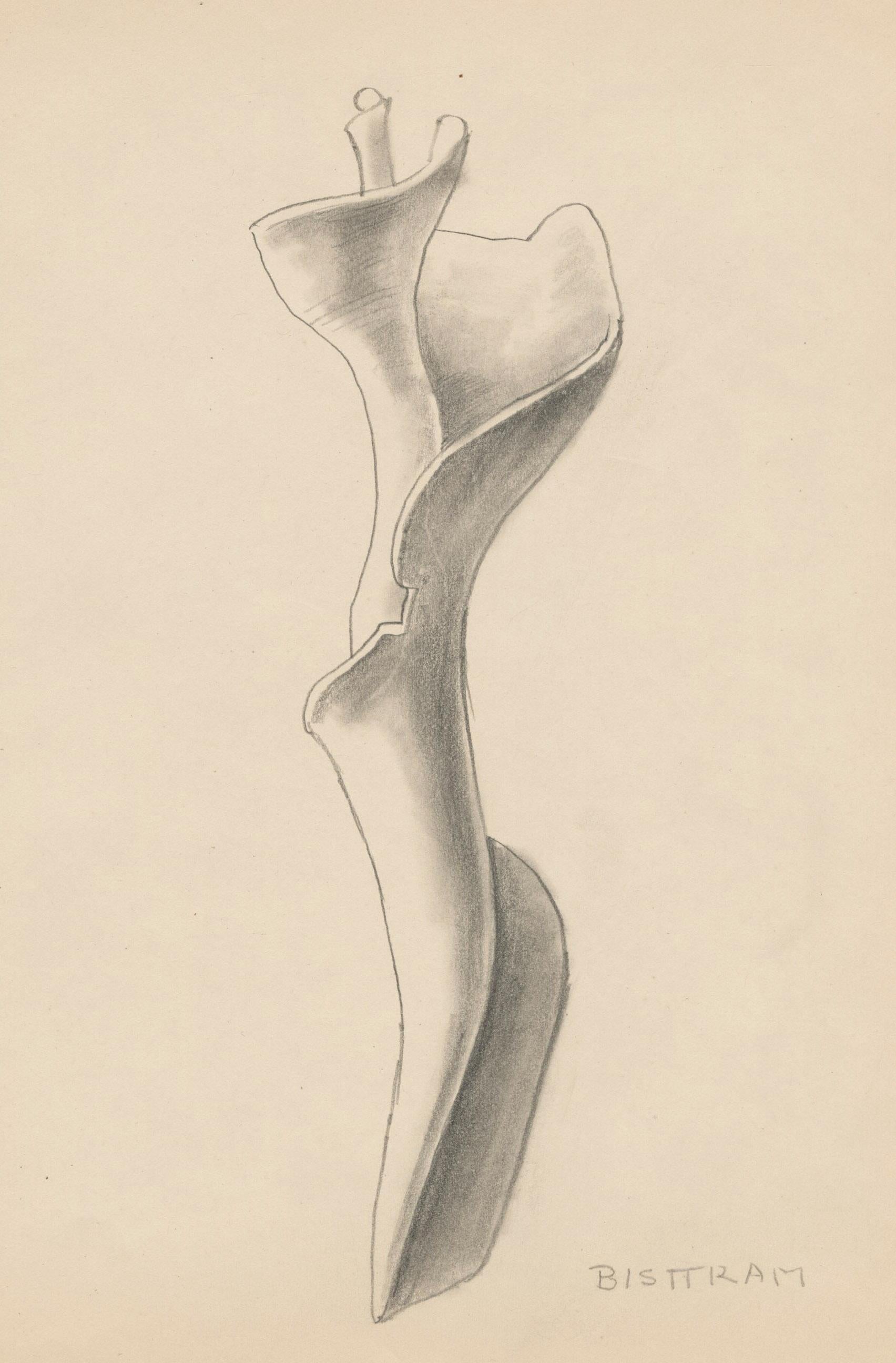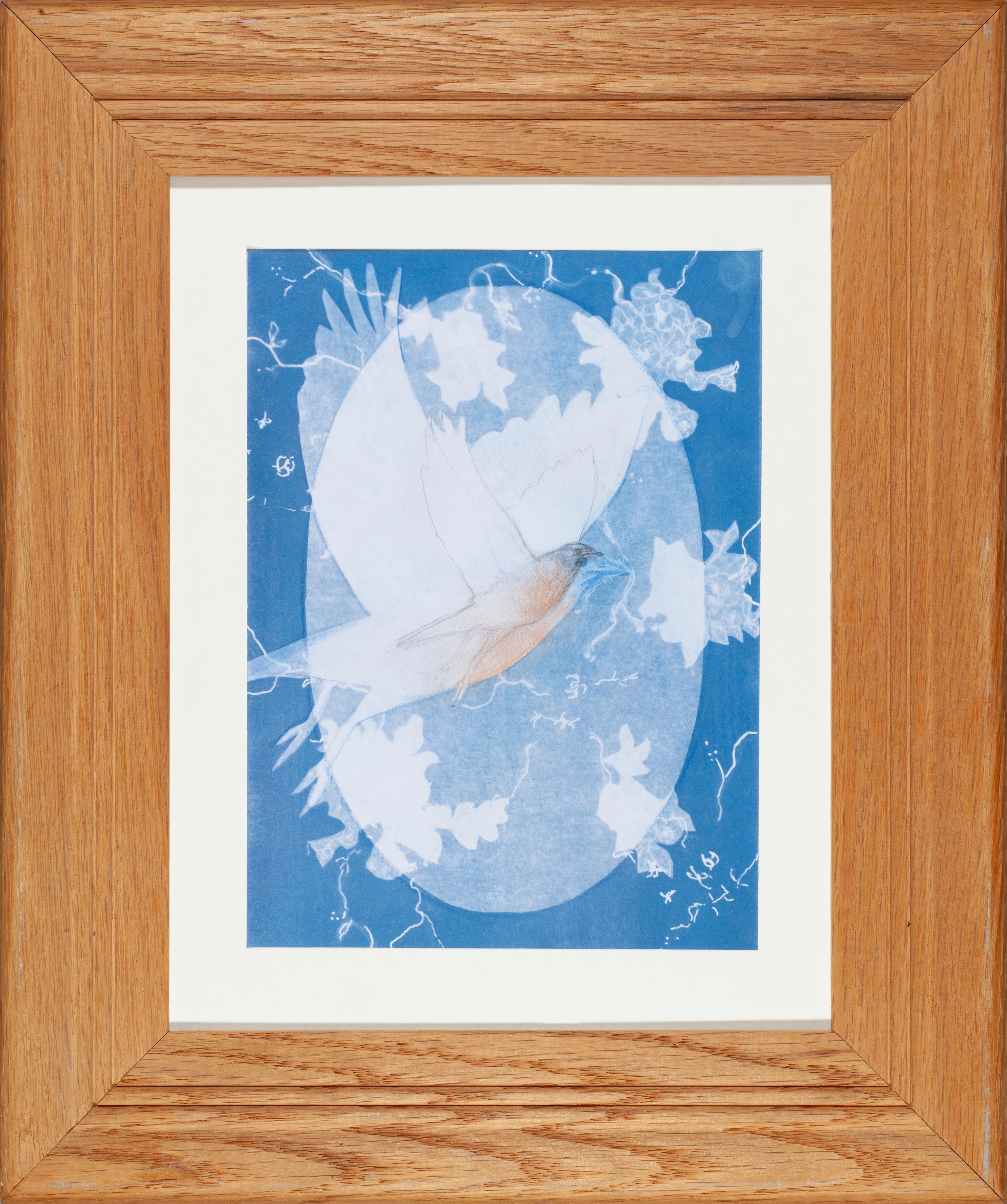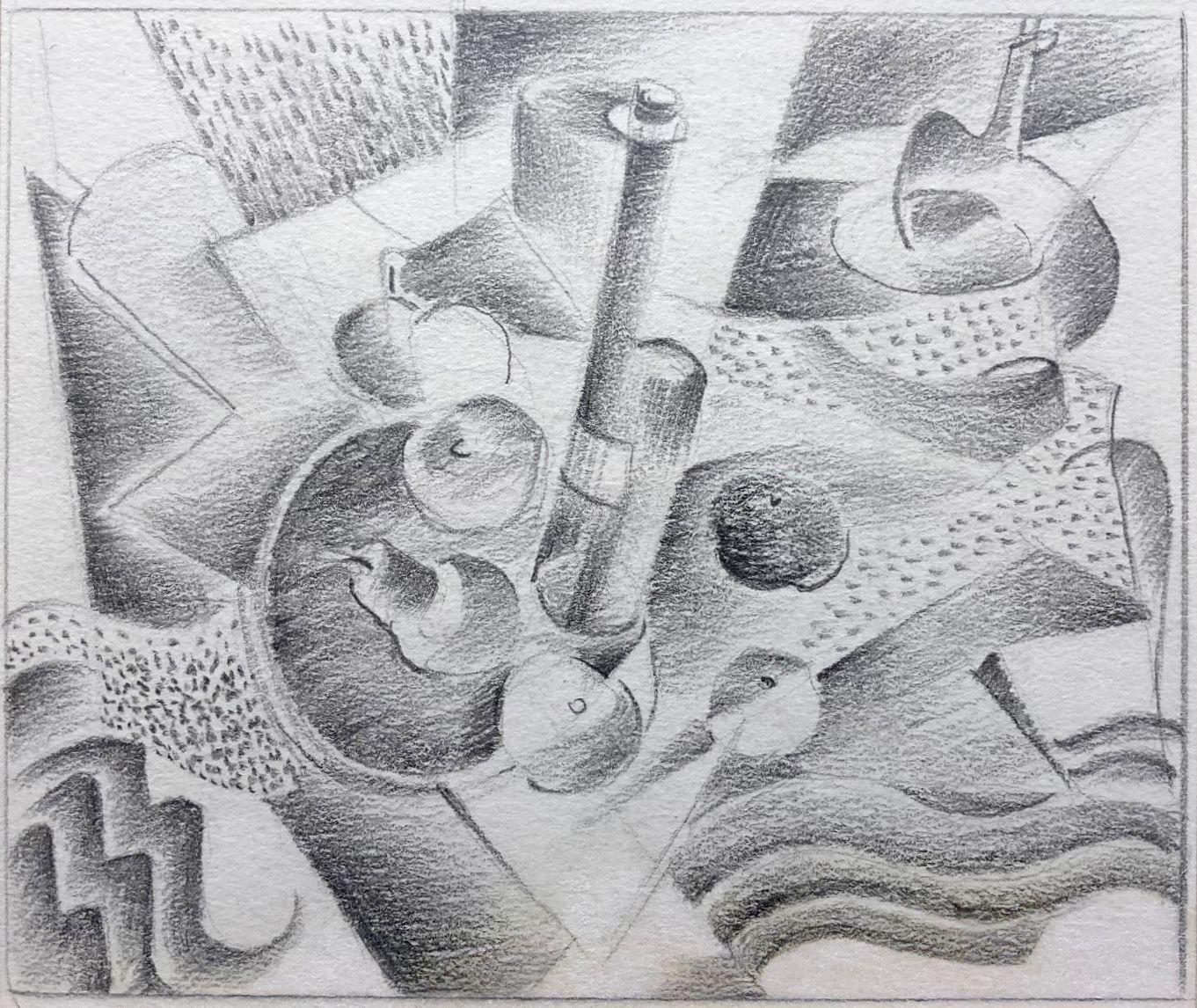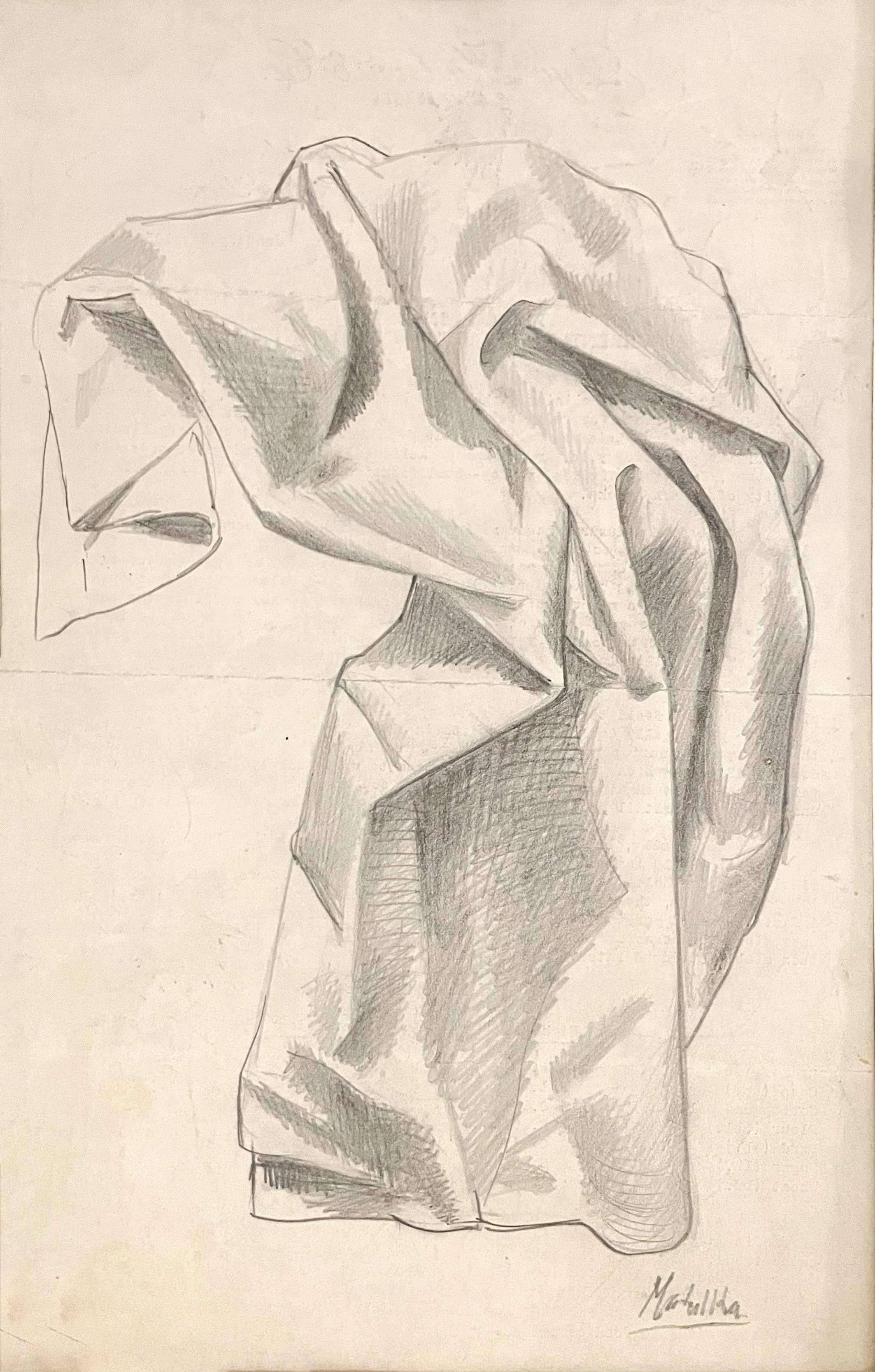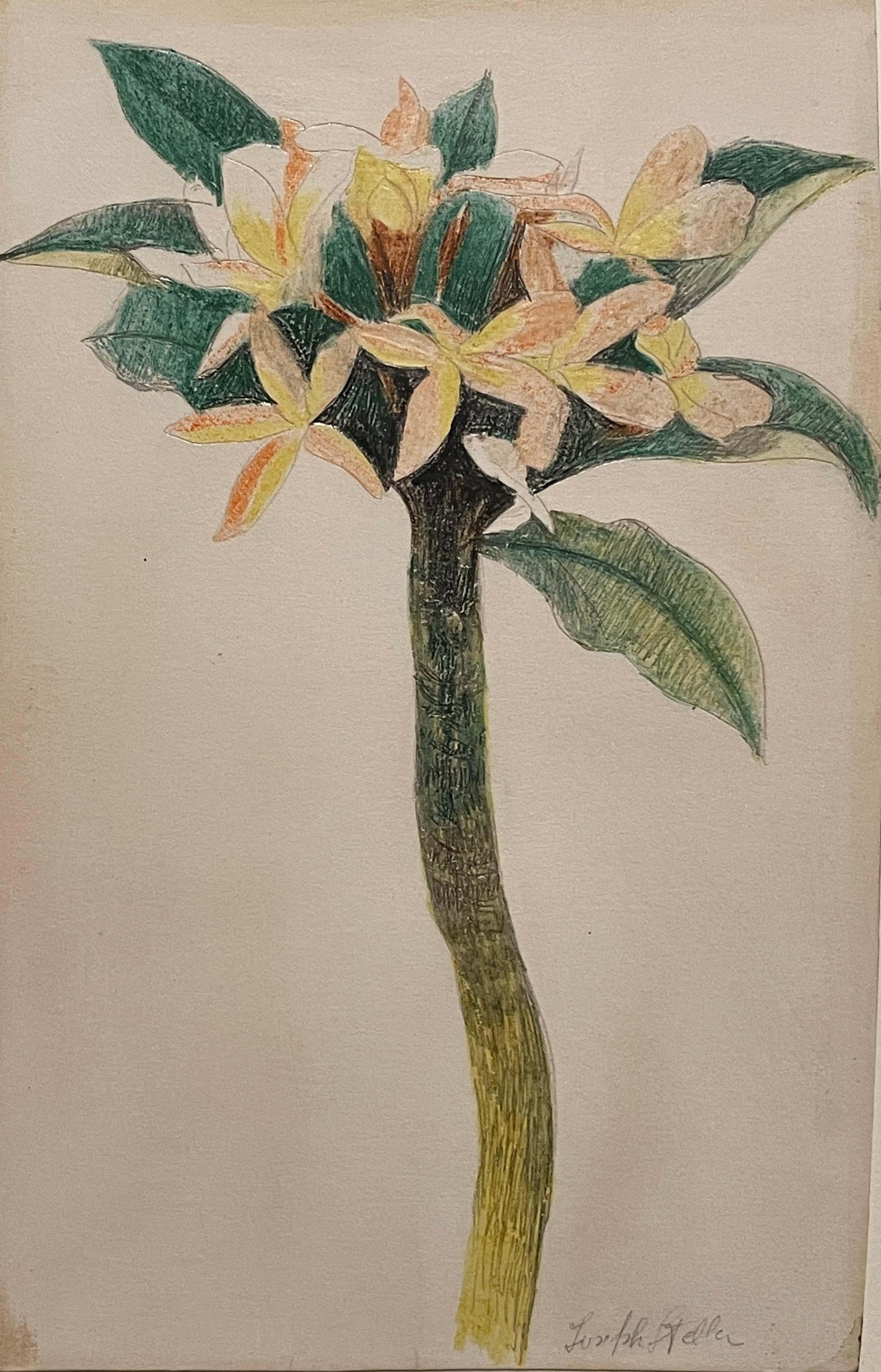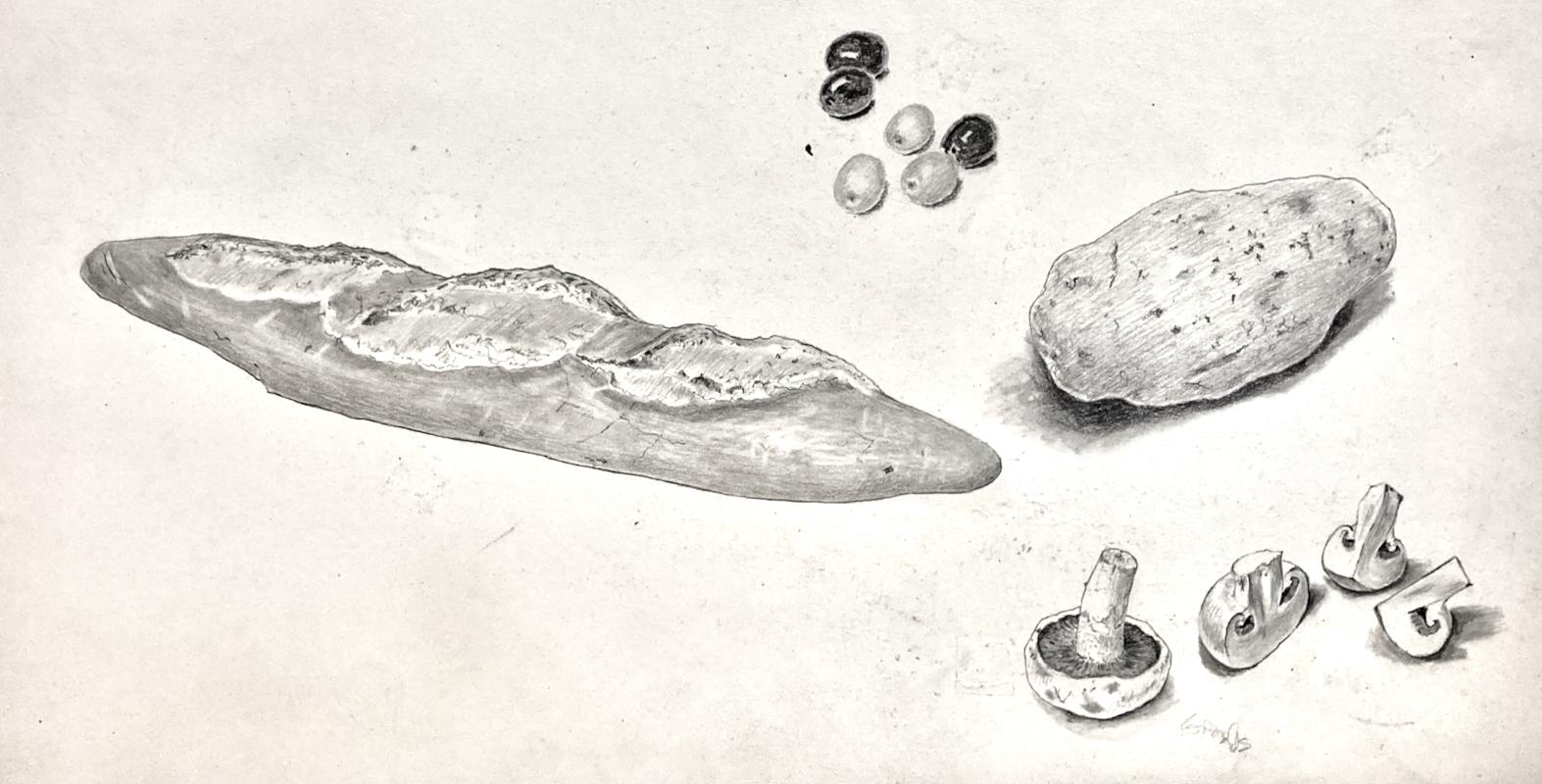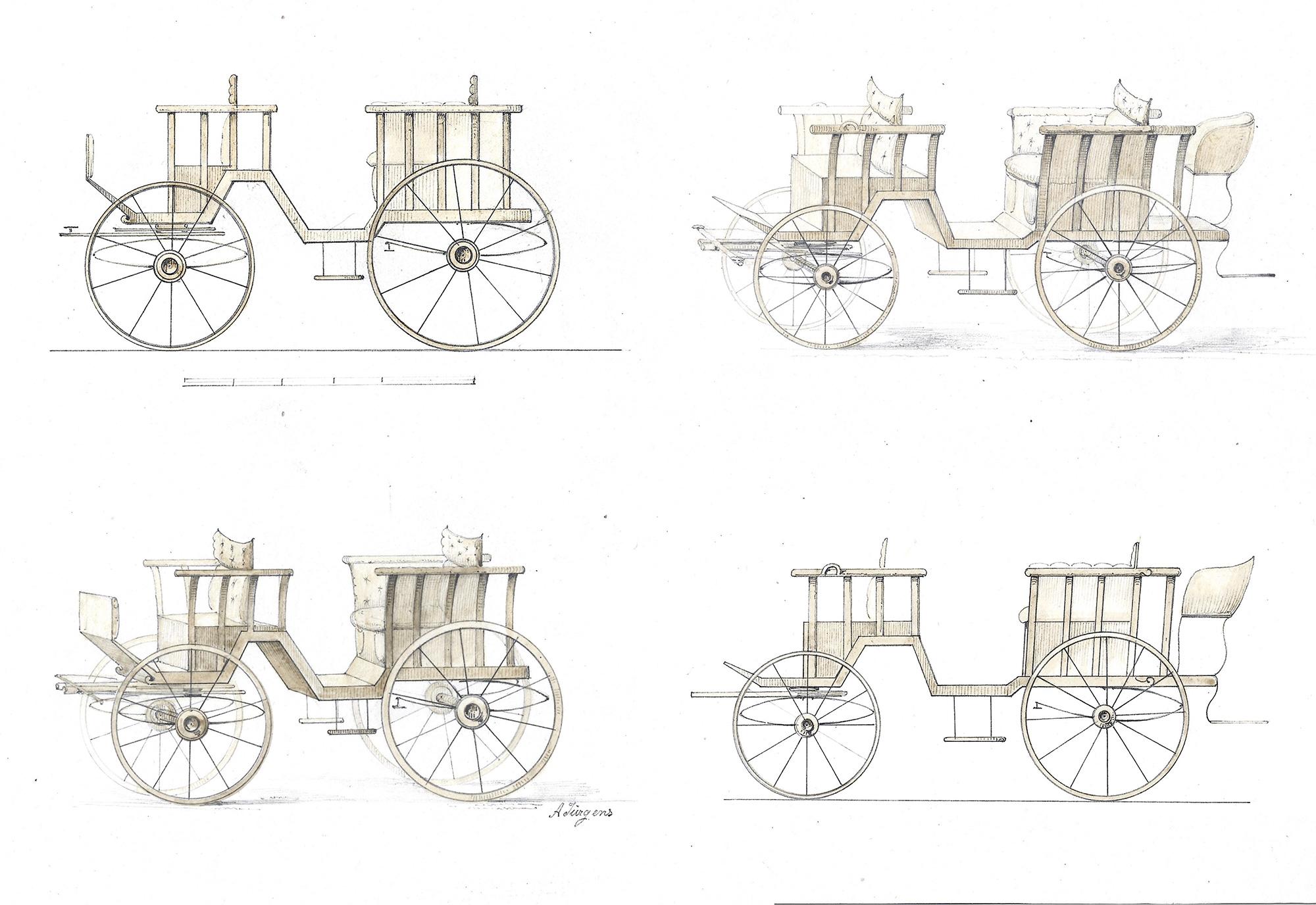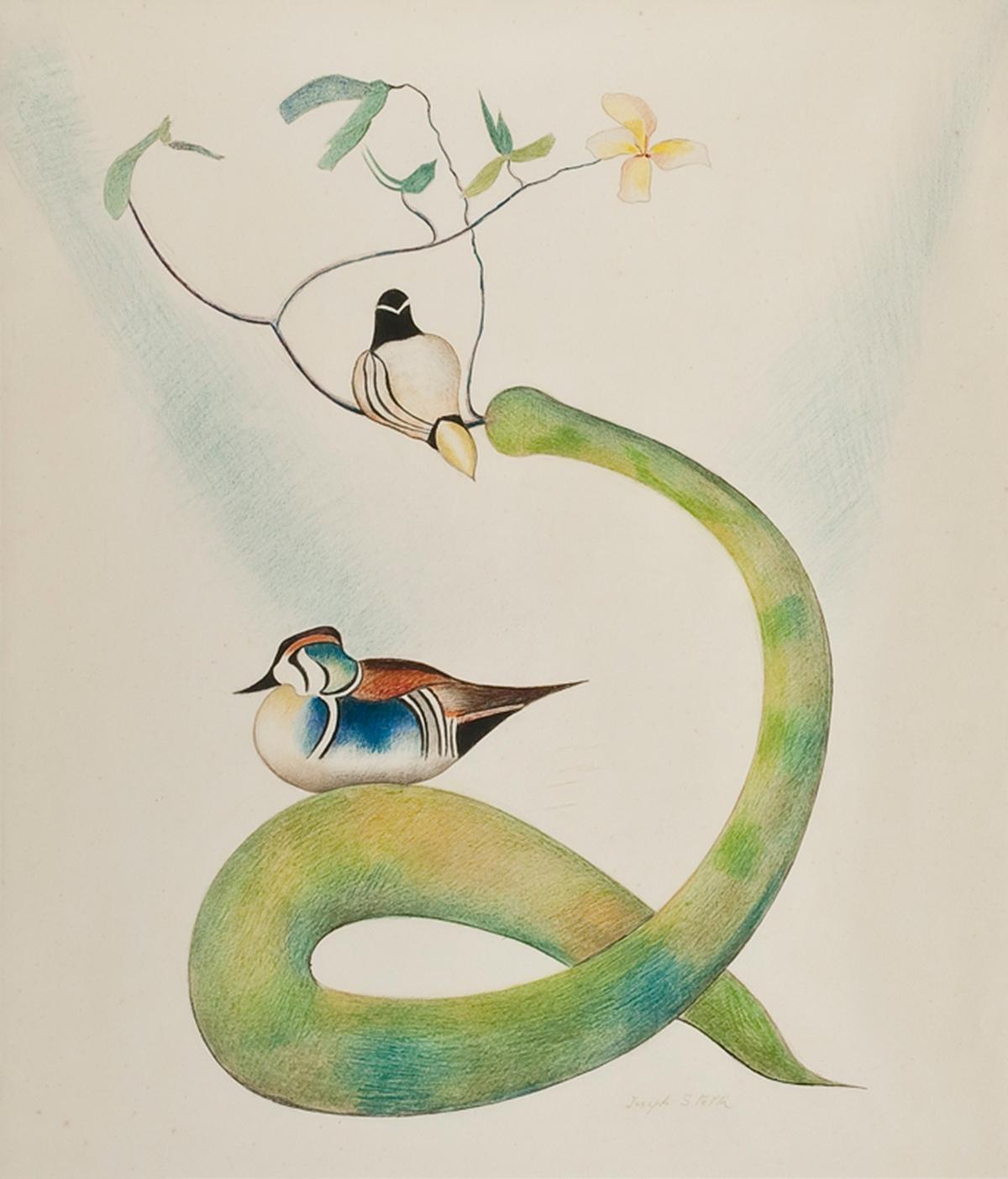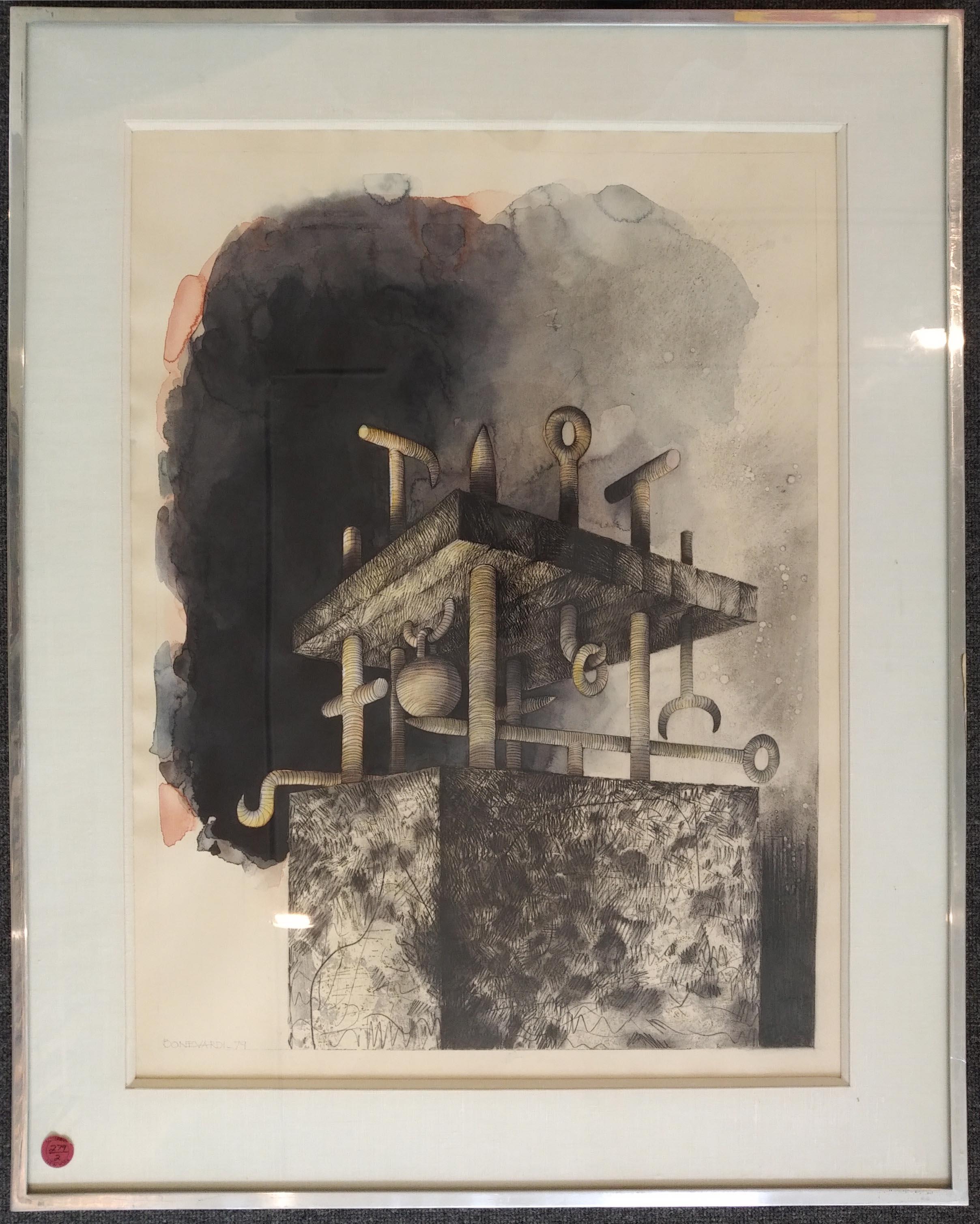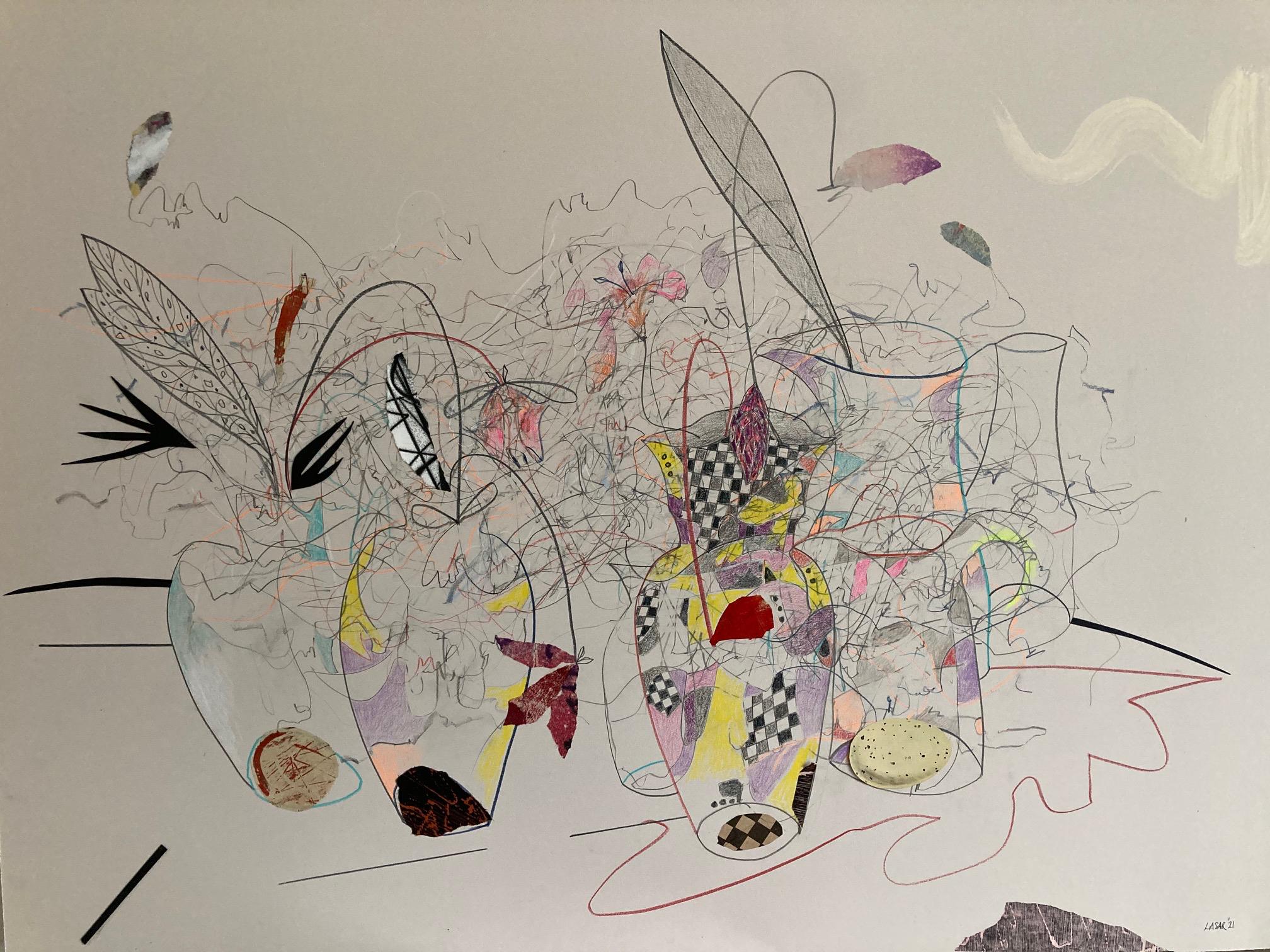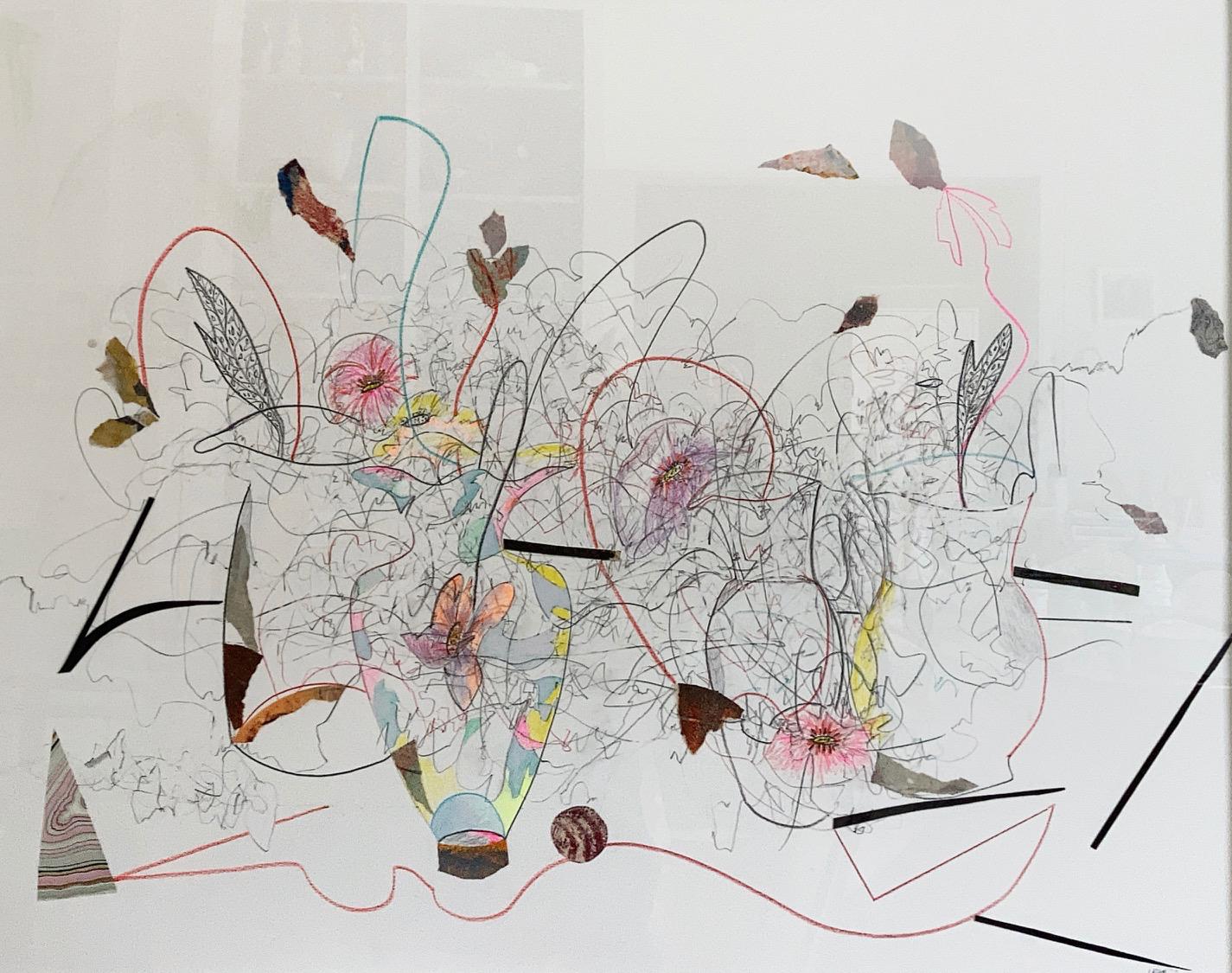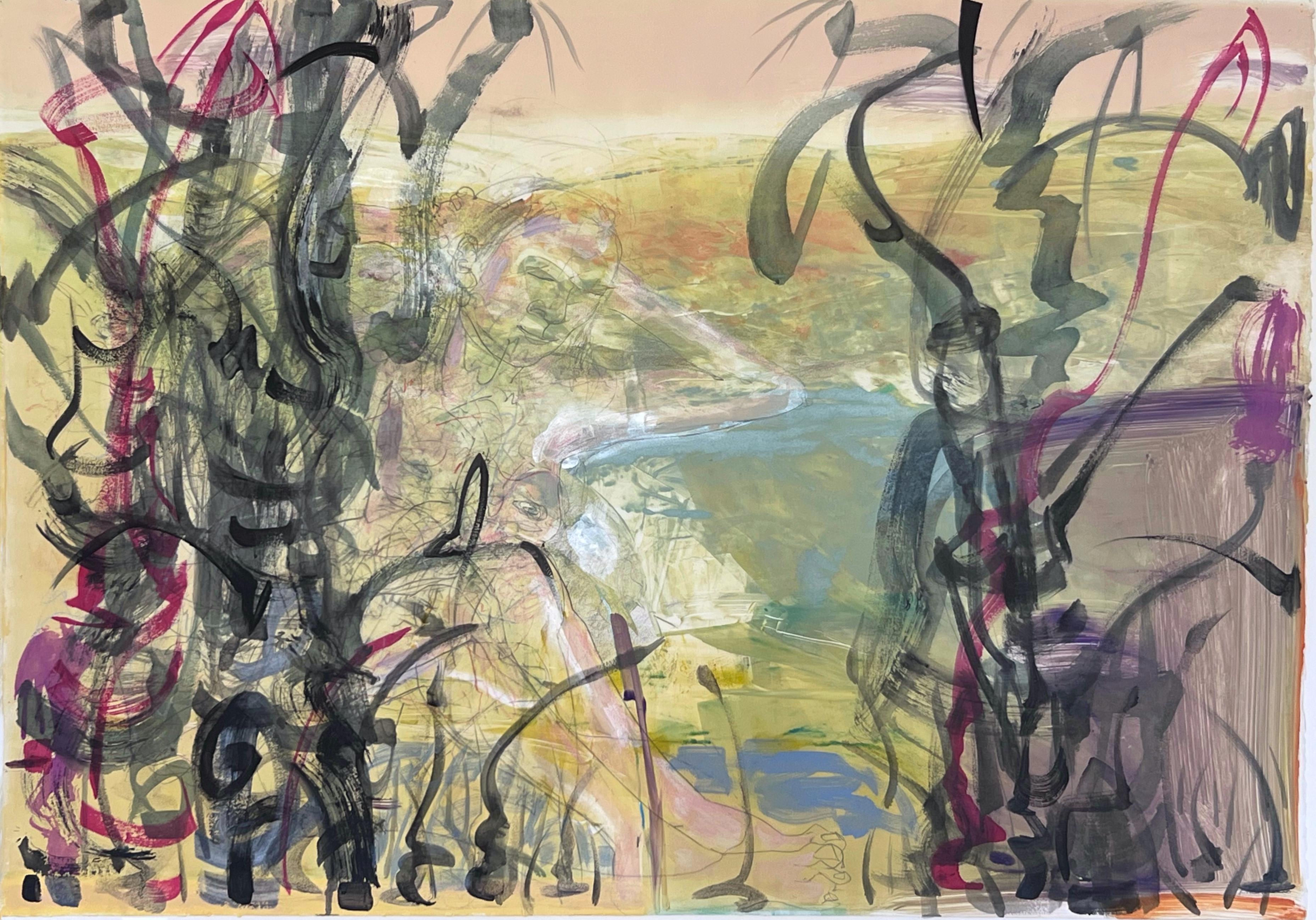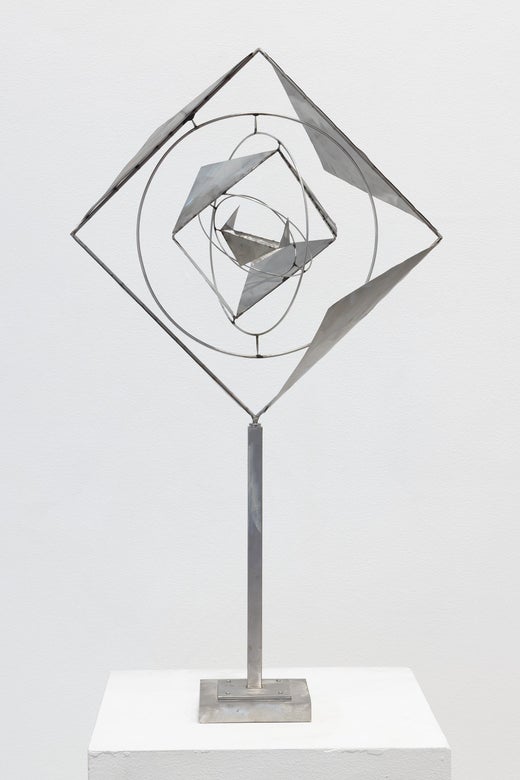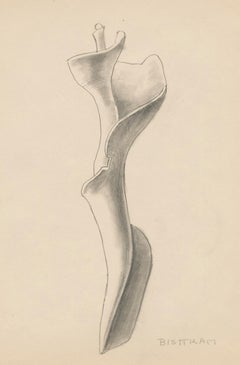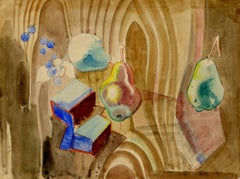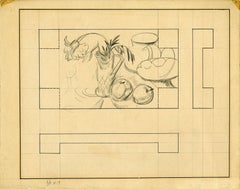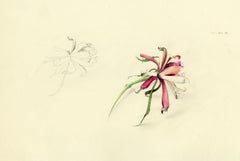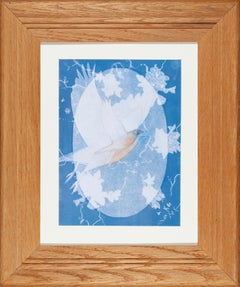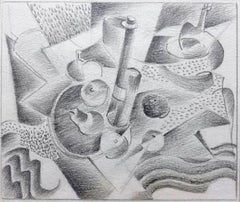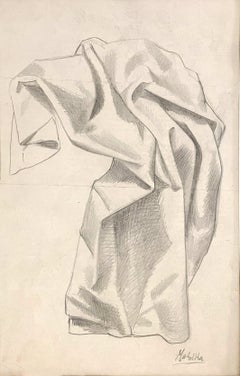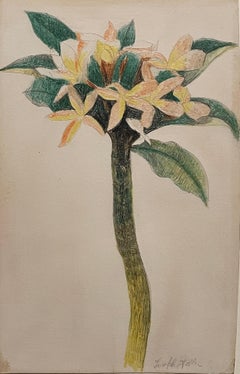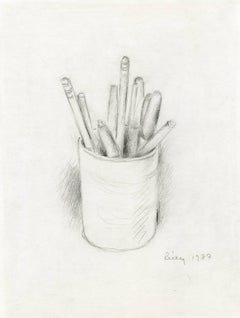
Pencils and Pens
View Similar Items
Want more images or videos?
Request additional images or videos from the seller
1 of 8
George RickeyPencils and Pens1987
1987
$3,750List Price
About the Item
- Creator:George Rickey (1907-2002, American)
- Creation Year:1987
- Dimensions:Height: 13.94 in (35.41 cm)Width: 10.69 in (27.16 cm)
- Medium:
- Movement & Style:
- Period:
- Condition:
- Gallery Location:Fairlawn, OH
- Reference Number:Seller: FA76931stDibs: LU14011838732
George Rickey
GEORGE RICKEY Born: South Bend, Indiana, 1907 Died: St. Paul, Minnesota, 2002 George Rickey spent over five decades committed to the creation of poetic and precisely-calibrated sculptures that he referred to as his “useless machines.” Of all the natural forces, it was the wind’s movement that most captured Rickey’s imagination. He once wrote, “The artist finds waiting for him, as subject, not the trees, not the flowers, not the landscape, but the waving of branches and the trembling of stems, the piling up or scudding of clouds, the rising and setting and waxing and waning of heavenly bodies.” Rickey began to devote himself to the investigation of motion in sculpture, producing dynamic works using simple geometric forms such as lines, squares, rectangles, circles, etc., in which his prodigious understanding of engineering and mechanics is demonstrable. Though the works enthusiastically collaborate with the interference of wind currents in their environment, the speed of their random movements are tempered by simple spacing and fixed arrangement of the elements. The relationship of the parts remains the same, but the dance is always changing. It is this tension that defines Rickey’s sculptures. “I think it’s important to make art that you have to wait for,” said the artist. As such, the works are able to oscillate gracefully through an infinite number of compositional iterations, engaging all aspects of the natural world around them—wind, light, rain, fog, or the lack thereof. Much of Rickey’s work was created in his studio in East Chatham, New York, where he settled in 1960. Prior to that time, the artist had lived and taught in Bloomington, IN; New Orleans, LA; New York, NY, and throughout the Midwest. His childhood, youth and college years were spent in Scotland and Britain. Aside from East Chatham he had studios in Berlin, Germany and Santa Barbara, CA. George Rickey's work is included in the permanent collections of over 150 museums worldwide, including the Hirshhorn Museum and Sculpture Garden, Smithsonian Institution, Washington, D.C.; Los Angeles County Museum of Art, California; Museum of Modern Art, New York; Metropolitan Museum of Art, New York; National Gallery of Art, Washington, D.C.; Walker Art Center, Minneapolis; National Gallery of Scotland, Edinburgh; Museum Boijmans Van Beuningen, Rotterdam and Kunstmuseum Bern, Switzerland, among many others. Key exhibitions include George Rickey: Monumental Sculptures on Park Avenue, New York (2021); A Life in Art: Works by George Rickey, Indianapolis Art Center, Indiana (2009); George Rickey: Kinetic Sculpture, A Retrospective, Vero Beach Museum of Art, Florida; Frederik Meijer Gardens and Sculpture Park, Grand Rapids and McNay Art Museum, San Antonio (2007-09); George Rickey: Kinetische Skulpturen, Museum für Kunst und Gewerbe, Hamburg, Germany (2003) and George Rickey – Retrospective Exhibition, Solomon R. Guggenheim Museum, New York (1979).
About the Seller
5.0
Recognized Seller
These prestigious sellers are industry leaders and represent the highest echelon for item quality and design.
Gold Seller
Premium sellers maintaining a 4.3+ rating and 24-hour response times
Established in 1978
1stDibs seller since 2013
802 sales on 1stDibs
Associations
International Fine Print Dealers Association
Authenticity Guarantee
In the unlikely event there’s an issue with an item’s authenticity, contact us within 1 year for a full refund. DetailsMoney-Back Guarantee
If your item is not as described, is damaged in transit, or does not arrive, contact us within 7 days for a full refund. Details24-Hour Cancellation
You have a 24-hour grace period in which to reconsider your purchase, with no questions asked.Vetted Professional Sellers
Our world-class sellers must adhere to strict standards for service and quality, maintaining the integrity of our listings.Price-Match Guarantee
If you find that a seller listed the same item for a lower price elsewhere, we’ll match it.Trusted Global Delivery
Our best-in-class carrier network provides specialized shipping options worldwide, including custom delivery.More From This Seller
View AllUntitled, Still Life of Shell
Located in Fairlawn, OH
Untitled, Still Life of Shell
Graphite on paper, 1945-1951
Signed lower right in pencil "Bisttram" (see photo)
Condition: Excellent
Sheet size: 9.63 x 7 .5 inches
EMIL BISTTRAM (189...
Category
1940s American Modern Still-life Drawings and Watercolors
Materials
Graphite
Still Life with Tromp L'Oeil
By William Sommer
Located in Fairlawn, OH
Still Life with Tromp L'Oeil
Graphite and watercolor on a book page.
Signed in ink by the artist lower right corner
(see photo)
Provenance:
Estate of the artist (Estate No. 00916 verso)
Ray Sommer (the artist's son)
Joseph M. Erdelac (No. 18 JME verso)
Book page verso is an illustration of a Durer woodcut...
Category
1920s American Modern Still-life Drawings and Watercolors
Materials
Watercolor
untitled (Still Life with Apples and Vase of Flowers)
By William Sommer
Located in Fairlawn, OH
[recto];untitled (Sketches for Still
Unsigned
9 1/2 x 12 inches (24.2 x 30.6 cm.)
Category
20th Century Still-life Drawings and Watercolors
Materials
Graphite
Flower Studies
By Mary Spain
Located in Fairlawn, OH
Unsigned
Graphite and colored pencils on laid paper
Category
Mid-20th Century Surrealist Still-life Drawings and Watercolors
Materials
Color Pencil, Graphite
Untitled (cacti)
By Peter Marks
Located in Fairlawn, OH
Provenance:
Estate of the Artist
Peter Marks (1935 -2010)
Peter Marks was born in New York City on January 18, 1935. A lifetime New Yorker, Marks gradu...
Category
Early 2000s Abstract Geometric Still-life Drawings and Watercolors
Materials
Graphite
Plum Branches and Flowers
By Joseph O'Sickey
Located in Fairlawn, OH
Plum Branches and Flowers
watercolor on wove paper, 1985
Signed and dated in pencil lower right corner
From the artist's 1985 sketchbook
Inspired by O'Sickey's love of Japanese and Chinese art and calligraphy.
Provenance: Estate of the artist
Condition: Excellent
Image/Sheet size: 13 5/8 x 17 inches
Joseph B. O’Sickey, Painter
1974 CLEVELAND ARTS PRIZE FOR VISUAL ARTS
The title conferred on him by Plain Dealer art critic Steve Litt in a 1994 article, “the dean of painting in northeast Ohio,” must have pleased Joseph O'Sickey. It was more than 30 years since he had burst onto the local (and national) art scene. O’Sickey was already in his 40s in that spring of 1962 when he had his first one-man show at the Akron Art Museum and was signed by New York’s prestigious Seligmann Galleries, founded in 1888. In the decade and a half that followed, he would have seven one-man shows at Seligmann, which had showed the work of such trailblazing figures as Seurat, Vuilliard, Bonnard, Leger and Picasso, and appear in all of the group shows.
O’Sickey took the Best Painting award in the 1962 May Show at the Cleveland Museum of Art (CMA). He and would capture the same honor in back-to-back May Shows in 1964 and ’65, and again in 1967. The remarkable thing, noted the Plain Dealer’s Helen Borsick, was that he accomplished this sweep in a variety of painterly styles, even using that most hackneyed of subjects, flowers. “The subject doesn’t matter,” he told her, “what the artist brings to it is the important thing.” O’Sickey’s garden and landscape paintings were big and bold, eschewing delicate detail in favor of vitality and impact. The great art collector and CMA benefactor Katherine C. White, standing before one of O’Sickey’s vivid garden paintings, compared the sensation to “being pelted with flowers.”
Though he might represent an entire blossom with one or two smudged brush strokes or a stem with a simple sweep of green, O’Sickey rejected the moniker of Impressionist—or Pointillist or Abstract painter or Expressionist. “My work,” he said, “is a direct response to the subject. I believe in fervor and poetic metaphor. I try to make each color and shape visible and identifiable within the context of surrounding colors and shapes. A yellow must hold its unique quality from any another yellow or surrounding color, and yet read as a lemon or an object, by inference. It does not require shading or modeling—the poetic evocation is part of the whole.”
“The subject,” O’Sickey used to tell his students at Kent State University, where he taught painting from 1964 to 1989, “has to be seen as a whole and the painting has to be structured to be seen as a whole.” He liked to think of it as “a process of controlled rapture.”
When, in the 1960s, fond childhood memories drew him to the zoo, he found himself responding to the caged animals in their lonely dignity (or indignity) with sharp-edged, almost silhouette-like forms that evoked Matisse’s paintings and cut-paper assemblages. One observer was left with the impression that the artist had “looked at these animals, past daylight and into dusk when they lose their details in shadow and become pure shapes, with eyes that are seeing the viewer rather than the other way around. This is a world of shape and essence,” wrote Helen Borsick. “All is simplification.”
O’Sickey attributed his ability to capture his subjects with just a few strokes—in an almost iconographic way—to a rigorous exercise he had imposed upon himself over a period of several months. Limiting his tools to a large No. 6 bristle brush and black ink, he set himself the task of drawing his pet parakeet and the other small objects in its cage (cuttlebone, feeding dish, tinkling bell) hundreds of times. The exercise gave him “invaluable insights into painting. . . . Because of the crudity of the medium, every part of these drawings had to be an invention and every mark had to have its room and clarity.” Then he began adding one color at a time—“still with the same brush and striving for the same clarity”—and headed off to the zoo where “the world opened up to me. I learned how little it took to express the subject.”
Born in Detroit at the close of the First World War, O’Sickey grew up in St. Stanislaus parish near East 65th and Fleet on Cleveland’s southeast side. (The apostrophe was inserted into the family’s proud Polish name by a clerk at Ellis Island.) An early interest in drawing and painting may have been kindled by the presence on the walls of Charles Dickens Elementary School, one of only three grade schools in the district with a special focus on the arts, of masterful watercolors by such Cleveland masters as Paul Travis, Frank N. Wilcox and Bill Coombes.
As a youngster O’Sickey took drawing classes at the Cleveland Museum of Art, and he and his brother spent hours copying famous paintings; while a student at East Tech High School in the mid-’30s, he attended free evening classes in life drawing with Travis and Ralph Stoll at the John Huntington Art and Polytechnic Institute, and Saturday classes at the Cleveland School (later the Cleveland Institute) of Art, where he earned his degree in 1940 under the tutelage of Travis, Stoll and such other legendary figures as Henry Keller, Carl Gaertner, William Eastman, Kenneth Bates...
Category
1980s Contemporary Still-life Drawings and Watercolors
Materials
Watercolor
You May Also Like
Eastern Bluebird
Located in Columbia, MO
Hannah Reeves
Eastern Bluebird
2024
13 x 11 framed
Category
21st Century and Contemporary American Modern Animal Drawings and Waterc...
Materials
Graphite, Photographic Paper, Acrylic
Ca. 1945 Cubist Graphite on Paper Still Life Drawing by Artist Stanley Bielecky
By Stanley Bielecky
Located in Chicago, IL
A ca. 1945, Cubist black & white graphite drawing of fruit by artist Illinois and Michigan artist Stanley Bielecky. Image size: 4" x 5". Archivally matted to: 13 1/4" x 16".
Stanley Bielecky was an Indiana artist who painted the American scene, from the factories and workers around East Chicago to the bucolic settings of Mackinac Island...
Category
1940s American Modern Drawings and Watercolor Paintings
Materials
Graphite, Paper
A ca. 1938 Graphite on Paper Study of Classical Drapery by Modernist Jan Matulka
By Jan Matulka
Located in Chicago, IL
A ca. 1938 graphite on paper, study of a classical drapery by notable Modernist artist Jan Matulka. The image is drawn on the back of a typewritten, folded sheet of stationery, from...
Category
1930s American Modern Still-life Drawings and Watercolors
Materials
Paper, Graphite
Joseph Stella Flower Study
By Joseph Stella
Located in Norwood, NJ
Joseph Stella (1877-1946, American, Italian) "Flower Study". Crayon and pencil on paper. Signed lower left. Image 6 7/8” x 4 /34”. Framed 12 1/2” x 10”. Gallery label Beadleston Gallery N.Y. N.Y.
Joseph Stella (American, June 13, 1877–November 5, 1946) was a Futurist painter known for his association with the American Precisionism movement and his works depicting industrial America. Stella was born in Lucano, Italy. In 1896, he relocated to New York, NY, to study medicine. After becoming interested in art, Stella left his medical studies and began to study art at the Art Students League of New York. While there, he studied under William Merritt Chase. During this time, Stella's early works featured a Rembrandt style...
Category
20th Century American Modern Still-life Drawings and Watercolors
Materials
Crayon, Pencil
Blanche Grambs, (Cooking Still Life: Bread, Olives, Potato, Mushrooms)
Located in New York, NY
In the 1950s and 60s Grambs worked on many commissions. This drawing was probably for a magazine, perhaps House and Garden or House Beautiful. It is signed and dated in pencil on the...
Category
Mid-20th Century American Modern Figurative Drawings and Watercolors
Materials
Ink, Pencil
Kutschen (carriages); Group of four designs for hansom cabs.
By Alfred Juergens
Located in Middletown, NY
Four pencil drawings, each with hand coloring in watercolor, each 6 3/4 x 10 inches (sheet) (172 x 254 mm), full margins. Each with inscriptions and notations by the artist in the up...
Category
Mid-20th Century American Modern Still-life Drawings and Watercolors
Materials
Handmade Paper, Watercolor, Pencil
